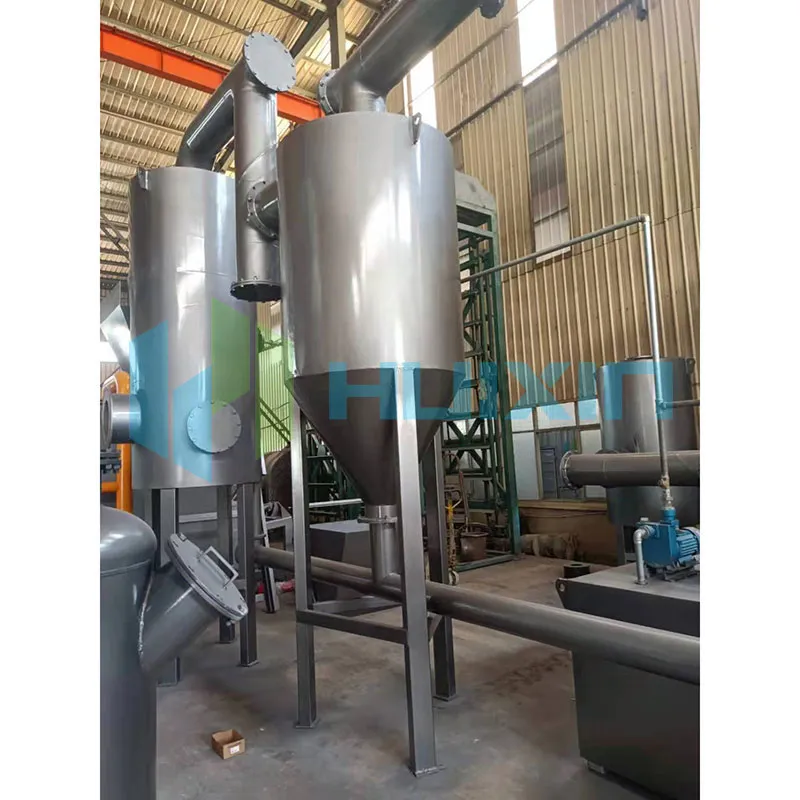Understanding Cyclone Dust Collectors: How They Work and Why They're Effective
2024-11-05
Dust collectors are essential in industries where airborne particles and dust are a concern—whether it’s woodworking, metalworking, or manufacturing. A popular solution for collecting and managing dust is the Cyclone Dust Collector, which is known for its efficiency and simplicity. In this blog, we’ll explore what a cyclone dust collector is, how it works, and why it’s an excellent choice for your dust collection needs.
What is a Cyclone Dust Collector?
A Cyclone Dust Collector is a type of air cleaning system that uses centrifugal force to separate dust particles from the air. These collectors are especially effective at removing larger dust particles before they reach the filter in the system. Typically, cyclone dust collectors are used as the first stage in multi-stage systems or as standalone units in industrial settings.
How Does a Cyclone Dust Collector Work?
The working principle behind cyclone dust collectors is surprisingly simple. Here's a breakdown of the process:
1. Air Intake: The dusty air enters the cyclone through an inlet, typically located tangentially to the outer wall of the cyclone chamber.
2. Centrifugal Force: Once inside, the air starts to spin rapidly due to the tangential direction of the inlet. This spinning motion creates a centrifugal force that throws the heavier dust particles toward the outer wall of the cyclone.
3. Dust Separation: As the air continues to spin, the dust particles, which are heavier than the air, are forced to the outer edge of the chamber and then fall into a collection bin or hopper at the bottom.
4. Clean Air Exit: The cleaner air, now stripped of larger dust particles, rises in the center of the cyclone chamber and exits through the top, typically through a central outlet pipe, either to be filtered further or exhausted outside.
Why Use a Cyclone Dust Collector?
Cyclone dust collectors have several advantages over other types of dust collection systems, such as baghouses or cartridge collectors. Here’s why they are effective:
- High Efficiency for Larger Particles: Cyclones are particularly effective at removing larger dust particles (over 10 microns), which helps prolong the life of secondary filters in multi-stage systems.
- Low Maintenance: Cyclone dust collectors typically require less maintenance because they do not have filters that need regular cleaning or replacing. The dust is separated and collected in a bin, which can be emptied periodically.
- Cost-Effective: Since cyclone dust collectors are simple in design and require less ongoing maintenance, they are often more affordable than more complex filtration systems.
- Durable and Robust: Cyclones are built to last and can handle high volumes of dust with minimal wear and tear. This makes them ideal for heavy-duty applications in industrial settings.
Applications of Cyclone Dust Collectors:
Cyclone dust collectors are used in various industries, including:
- Woodworking: Wood dust is a major concern, and cyclones are effective in separating sawdust and wood shavings.
- Metalworking: Metal shops producing grinding dust, welding fumes, and other particulates benefit from the efficiency of cyclone dust collectors.
- Food Processing: Cyclones are used to collect flour, spices, and other food particulates to maintain hygiene and safety standards.
- Pharmaceutical Manufacturing: Ensuring that dust does not contaminate environments is critical, and cyclones help maintain clean air.
A cyclone dust collector is a reliable and efficient option for managing dust and particulate matter in industrial settings. By using centrifugal force to separate dust from the air, cyclones can significantly reduce the amount of debris that reaches finer filters or enters the workspace. Whether used in conjunction with other filtration systems or as a standalone unit, cyclone dust collectors are a great solution for any industry that needs to maintain clean and safe working conditions.



